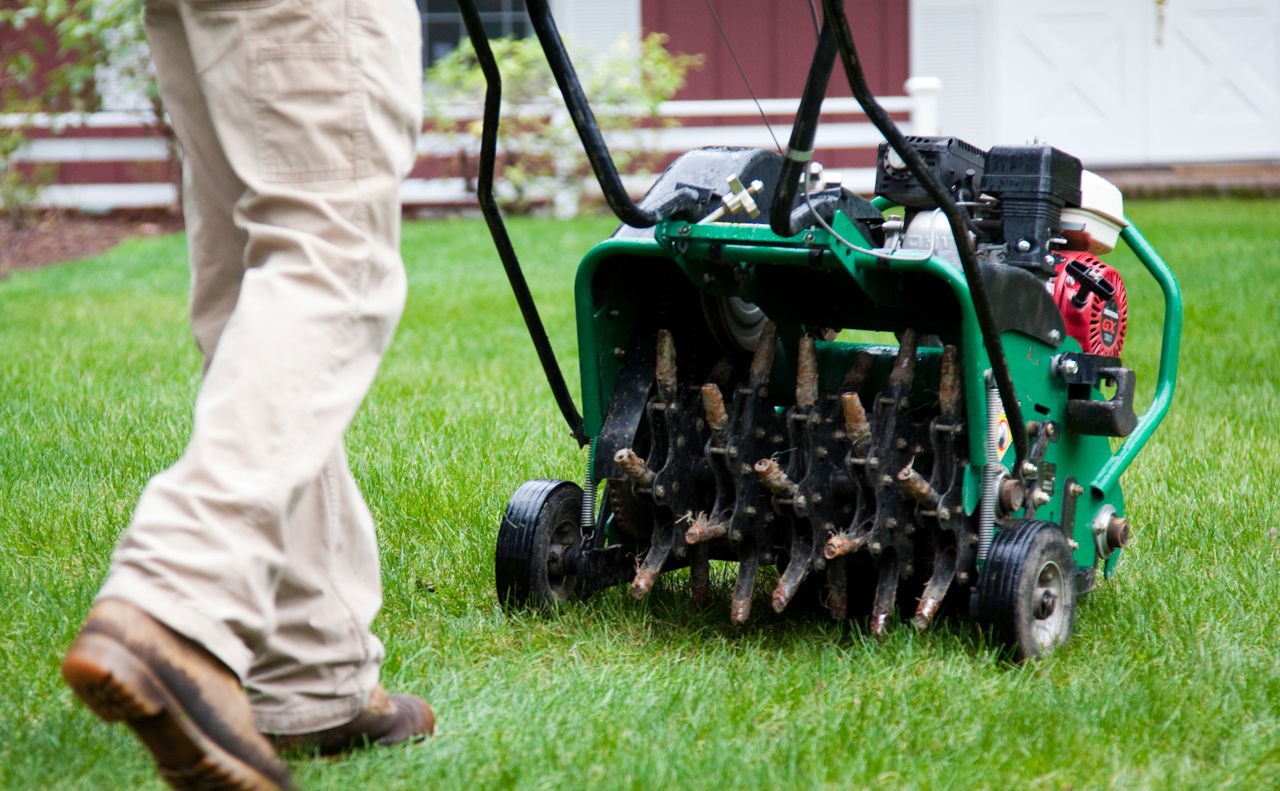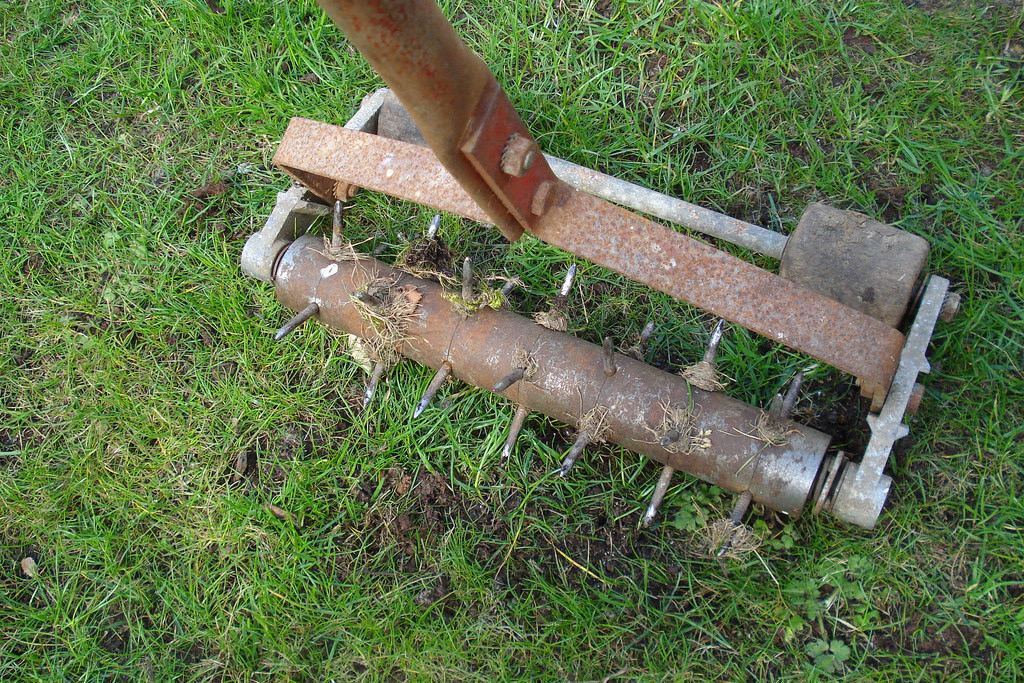Tips for Aerating Your Lawn in Toledo, OH

Creating and maintaining a beautiful lawn in Toledo, OH requires homeowners to use basic lawn care practices, such as mowing, fertilizing, and aerating. Everyone knows about mowing, water, and fertilizing, but core aeration is a method that many people may not fully understand.
Aeration is a crucial practice to achieving a healthy lawn by allowing air and water to absorb into the soil. If your yard is full of built-up grass or lawn thatch, aeration should be on your list of lawn care tasks.

What is Core Aeration?
Core aeration is the process of perforating the soil with tiny holes which allows air, water, and nutrients to reach the grassroots. For your grass to thrive, the roots need to grow deeply, with the necessary amounts of sunlight, air, water, and nutrients.
How Do I Know if My Lawn Needs To be Aerated?
One of the most common questions is how do I know if my lawn needs to be aerated? There are a few signs that your lawn should be aerated, such as:
- Your yard gets heavy use with children and pets. These factors contribute to soil compaction.
- If your house is established as part of a newly constructed home. The topsoil is often stripped or, and the subsoil is compacted by construction traffic.
- If your lawn dries out quickly and has a spongy feel, that means your yard has an excessive thatch problem.

The Best Time to Aerate in Toledo, OH
Every area has different times when you should aerate your lawn. For Toledo homeowners, the best time for aeration is during the growing season, so your grass can heal and fill in any of the open areas. You should aerate your lawn with cool season grass types in the early spring or fall. For warm-season grass types, aerate in the late spring.
Tools Needed to Aerate
There are two main aerating tools–a spike aerator and a plug aerator.
A spike aerator is a tool that pokes holes into the ground with a solid tine or fork. While this is effective, poking holes is less effective and can cause more compaction around the holes in your yard. These are affordable and look like a pitchfork with two hollow tines. You step on the tool’s bridge and drive the spikes into the ground. It’s a slow but effective process.
Plug aerators remove a core, or plug, or grass from the soil and lawn. These tend to give the best results because plugs of land are actually removed from your turf. The plug aerator pulls the plugs out of the soil and places them on the surface to dry. The only negative to a plug aerator is the cost–it can be triple the price of a spike aerator.

How to Aerate Your Lawn
Core aeration is one of the top requested services when people hire a professional. If you prefer the DIY method, here is how to aerate your lawn.
Make sure your soil is moist. Before you do anything, make sure your lawn is damp. Aerating bone dry yard isn’t fun. You should water your grass the day before you plan to aerate, or plan to aerate after your next rainfall.
Get the tools. Decide if you want to use a spike aerator or a plug aerator.
Make multiple passes. Most tools, like the spike or plug aerator, only cover a small area. That means you want to make numerous passes over the most compacted areas. Leave the unaffected areas alone to save time.
Apply compost or sand over the lawn. Sprinkle compost, sand, or peat moss over the grass to fill in the holes.
- Leave the plugs to dry. Your plug aerator leaves the plugs on the surface of your soil. Leave them there to dry, then you can either break them up yourself or run them over with your lawnmower.
- Lay grass seed and fertilizer. If you want to fertilize or spread grass seed, this is the best time to do so! Applying fertilizer puts nutrients into your grassroots, so it helps to prepare your grass for the summer heat or winter cold. Reseeding your grass where it is thin helps to create a healthier lawn.
- Continue primary lawn care after. Once you aerate, you should continue your same basic lawn care routine that includes fertilizing, mowing, and watering.
Benefits of Aerating Your Lawn
Your kids run around, the kids ride their bikes and chase each other. You mow each week and walk back and forth to your garden beds. All of those actions compact the soil. Whereas there are several benefits to aerating your lawn, the main reason you will want to do so is to alleviate soil compaction.
In the winter, inches of soil pressure down onto the ground, which can cause further compaction. Compacted soil has too many solid particles, which prevent proper circulation of air, water, and nutrients. If you have too much thatch or debris under the grass surface, you can starve your roots from all of these essential elements needed for growth.
A few other benefits of core aeration include:
- Stimulates new growth
- Improves drainage
- Creates a better environment for overseeding
- Increases the effectiveness of applied fertilizers and control products
Need help preparing your lawn? Visit our Toledo lawn care page to get in touch with a professional! In addition to Toledo, we provide lawn care services to other Ohio cities, including Dayton and Cleveland.
Featured image source: Zillow Toledo
Areas we service near Toledo